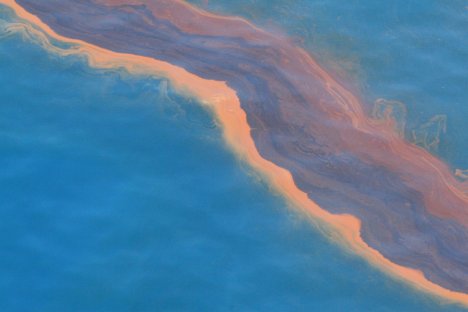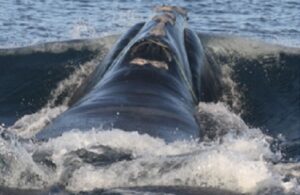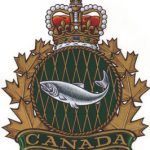Tag Archives: Corexit
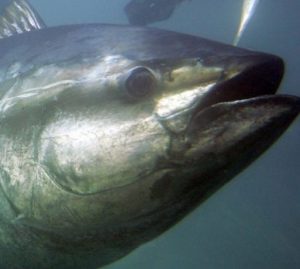
The Bluefin Tuna Trophy angler season closed in March. Normally it would last into June.
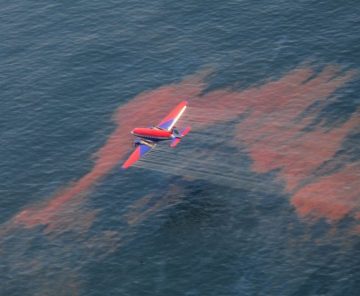
Coast Guard responders “harmed by chemicals used to clean up BP’s spill”
Sometimes, there is absolutely nothing worse than being proven right. It is the one thing you dreaded. Ever since the horrendous Deepwater Horizon spill in 2010, I and many others warned against using the toxic chemical called Corexit arguing that it would do more damage than good. The potential evidence of harm, or lack of evidence of its safety, was clear for everyone from BP to the US Government to see to if they had bothered to look. Nearly one million gallons of the dispersant was dropped by air and a further 770,000 gallons injected into the well head to try and disperse in excess of 200 million gallons of oil that was spilt by BP in the Gulf of Mexico. >click to read<13:21

Corexit Dispersant used in BP oil spill sickened workers, new federal study confirms
The chemicals that were used to break up oil from the 2010 BP Deepwater Horizon blowout have long been suspected of sickening workers who responded to the disaster. Now a federal health agency is backing some of their assertions. The National Institutes of Health this month published a study saying workers exposed to oil dispersants suffered a range of symptoms,,, Two dispersants, Corexit EC9500A and Corexit EC9527A, both manufactured by Nalco Environmental Solutions, were dropped by airplane to break up oil on the water’s surface. It was the first time dispersants had been used on a large scale, and their potential effects on human health and the environment were not known. click here to read the story 09:35
BP oil spill dispersants concern Nova Scotia Anti Drilling Group
 “When you mix this stuff with the oil, you create a compound that is substantially more dangerous than even the dangerous dispersant on its own or even the dangerous oil on its own and this is the issue that we have,” says John Davis, a founder of the No Rigs Coalition. He says Shell has already put out bids to use Corexit if there is a spill at a well planned for the Shelburne Gully. Davis says he worries the chemical could end up on the Georges Bank, pointing out the Labrador Current would carry any material right to the fertile fishing grounds. Read the rest here 09:20
“When you mix this stuff with the oil, you create a compound that is substantially more dangerous than even the dangerous dispersant on its own or even the dangerous oil on its own and this is the issue that we have,” says John Davis, a founder of the No Rigs Coalition. He says Shell has already put out bids to use Corexit if there is a spill at a well planned for the Shelburne Gully. Davis says he worries the chemical could end up on the Georges Bank, pointing out the Labrador Current would carry any material right to the fertile fishing grounds. Read the rest here 09:20
Government Recklessly Reopened Fisheries in the Gulf – Based Decision on Skewed Data and Questionable Testing Methodology
 Everyone knew something was very wrong back in 2010 when the “US Department of Commerce – National Oceanic and Atmospheric Administration (NOAA) began closing fisheries on May 2, 2010. It began reopening them, with various spatial and other limits, on June 23. The well was capped on July 15.” more@oilandgasleaks 17:26
Everyone knew something was very wrong back in 2010 when the “US Department of Commerce – National Oceanic and Atmospheric Administration (NOAA) began closing fisheries on May 2, 2010. It began reopening them, with various spatial and other limits, on June 23. The well was capped on July 15.” more@oilandgasleaks 17:26
NOAA Inaction in the Gulf of Mexico http://www.fishnet-usa.com/NOAA_Inaction.htm
Report: Dispersants Used After Blowout Had Few Ill Effects
 Lead author of the report, Doctor Jane Lubchenko, the head of the National Oceanic and Atmospheric Administration, was a key advisor to Environmental Protection Agency head Lisa Jackson when she made the decision, shortly after the blowout, to allow them to use dispersants underwater. “It was our judgment that use of dispersants would help the oil be naturally biodegraded more naturally, and that certainly seems to have been the case” Lubchenko said. http://www.alaskapublic.org/2012/12/12/report-dispersants-used-after-blowout-had-few-ill-effects/
Lead author of the report, Doctor Jane Lubchenko, the head of the National Oceanic and Atmospheric Administration, was a key advisor to Environmental Protection Agency head Lisa Jackson when she made the decision, shortly after the blowout, to allow them to use dispersants underwater. “It was our judgment that use of dispersants would help the oil be naturally biodegraded more naturally, and that certainly seems to have been the case” Lubchenko said. http://www.alaskapublic.org/2012/12/12/report-dispersants-used-after-blowout-had-few-ill-effects/
GULF OIL SPILL: Judge tosses claims against dispersant’s maker
NEW ORLEANS — A federal judge presiding over litigation spawned by the massive Gulf of Mexico oil spill has dismissed all claims against the manufacturer of a chemical dispersant that was used to break up crude gushing from BP’s blown-out well. http://www.montgomeryadvertiser.com/viewart/20121205/NEWS02/312050031/GULF-OIL-SPILL-Judge-tosses-claims-against-dispersant-s-maker
New study shows dispersant makes oil up to 52 times more toxic to Gulf of Mexico microorganisms
Followup studies after the 2010 Deepwater Horizon oil spill call into question the extensive use of chemical dispersants. Photo courtesy NOAA.
FRISCO — The massive amounts of oil that spilled into the Gulf of Mexico after BP’s Deepwater Horizon drill rig exploded was devastating to marine life, but the dispersant used in the aftermath to try and break down the oil slicks may have been even worse for some species, according to new research done by scientists with the Georgia Institute of Technology and Universidad Autonoma de Aguascalientes, Mexico. http://summitcountyvoice.com/2012/12/01/environment-new-study-shows-dispersant-makes-oil-up-to-52-times-more-toxic-to-gulf-of-mexico-microorganisms/






